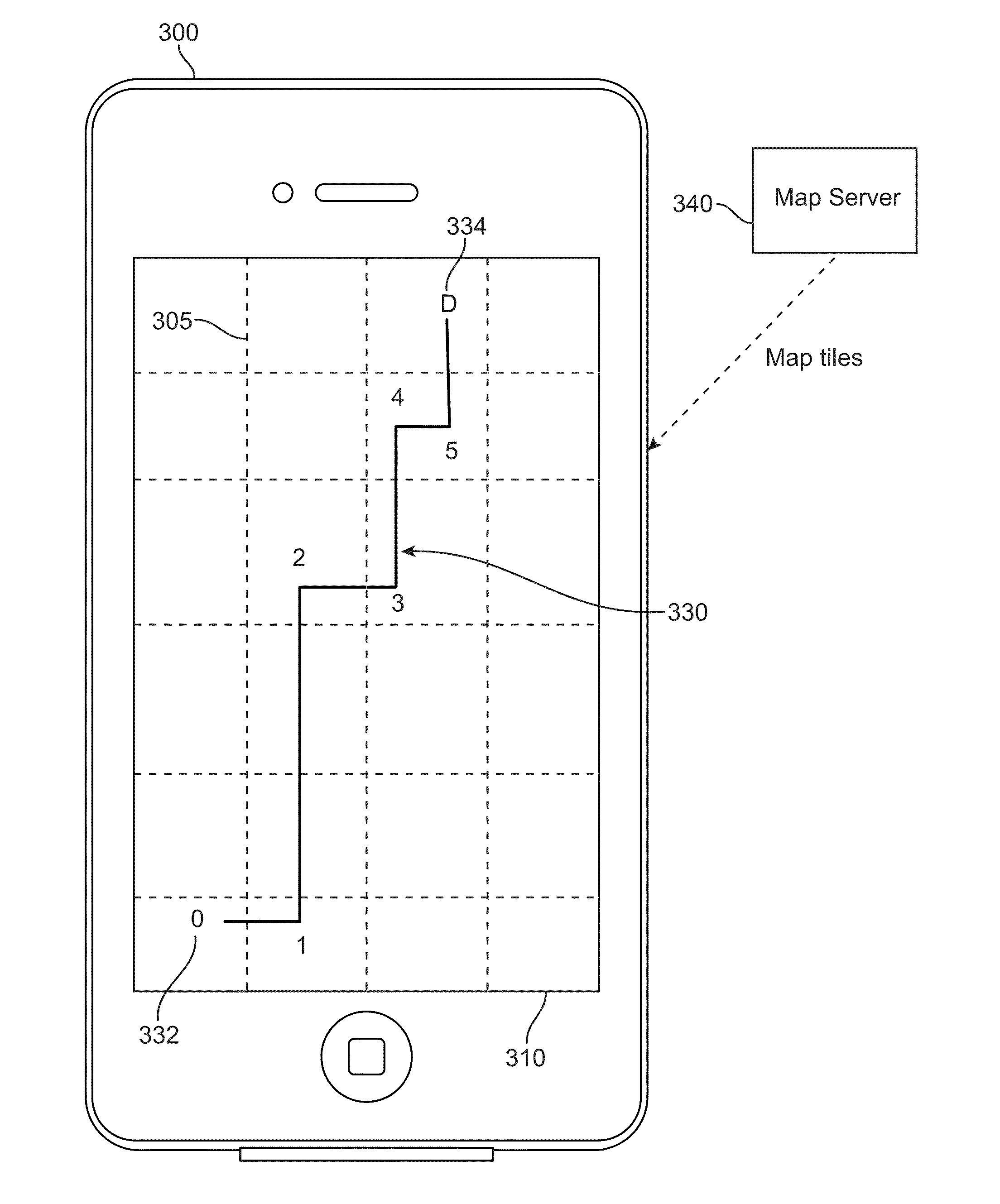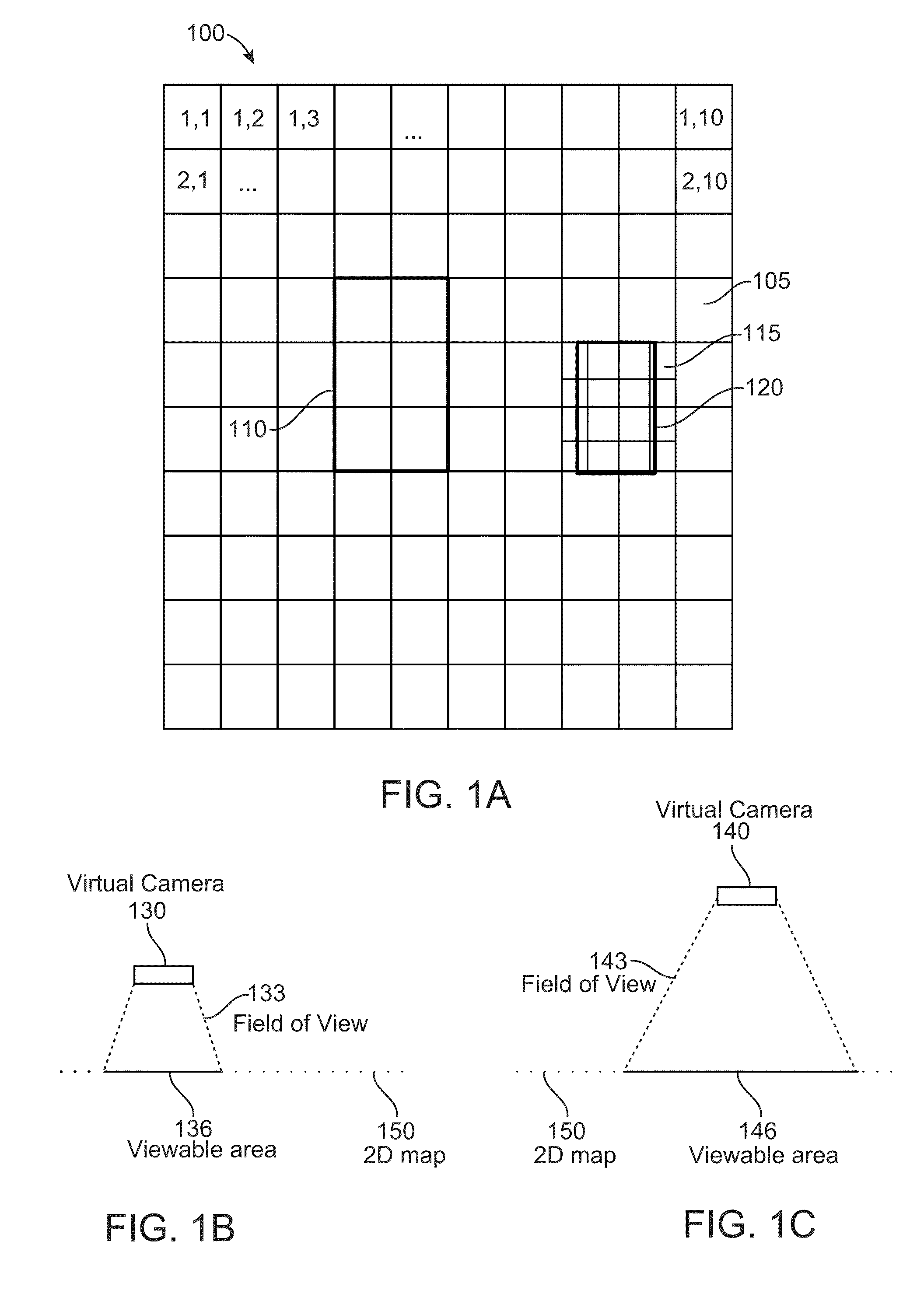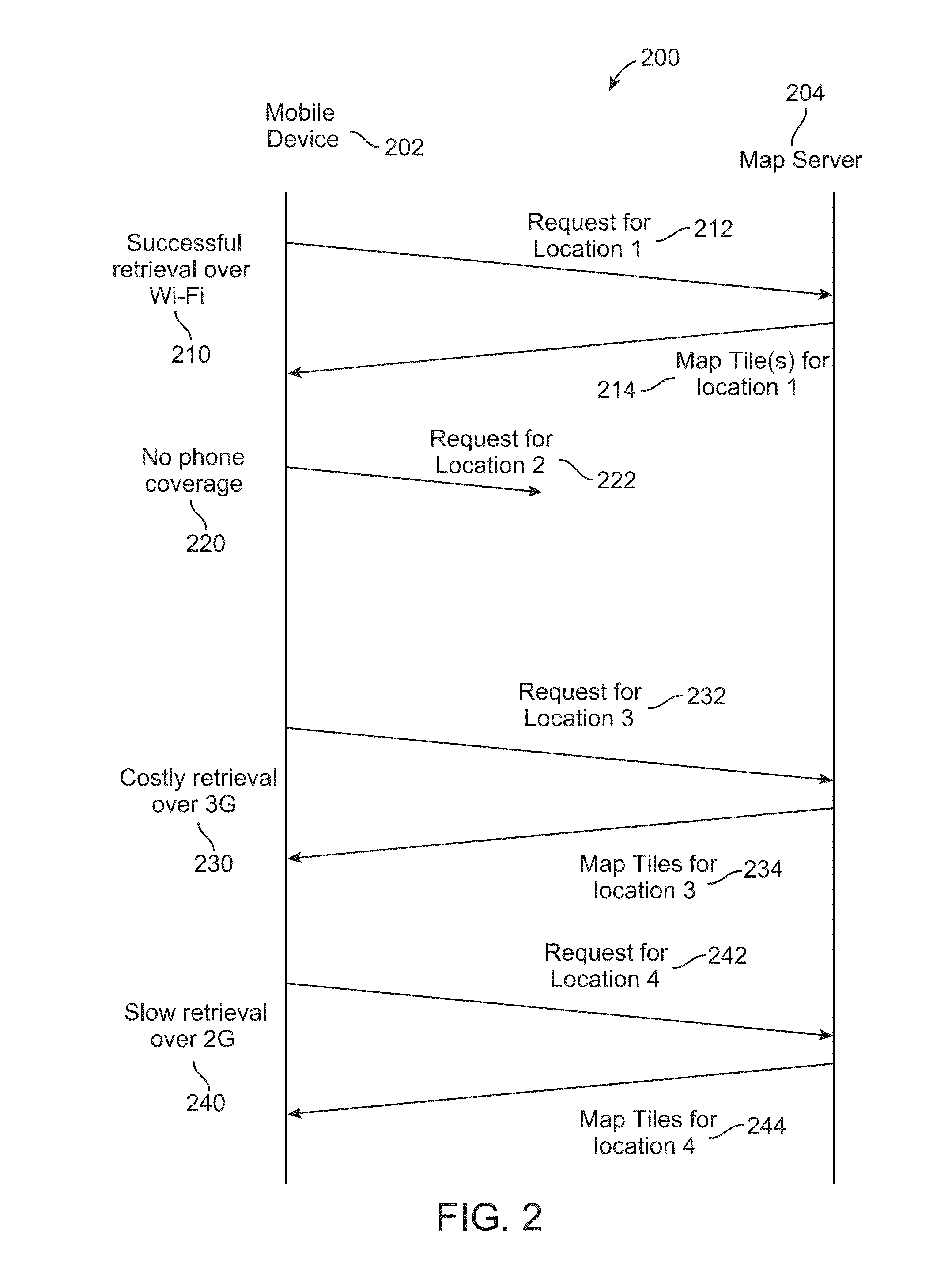Smart loading of map tiles
a map and intelligent technology, applied in the field of map tiles, can solve problems such as connectivity problems, user loss, and delay, and achieve the effects of reducing battery life, reducing user's ability to navigate, and reducing user's ability to find information
- Summary
- Abstract
- Description
- Claims
- Application Information
AI Technical Summary
Benefits of technology
Problems solved by technology
Method used
Image
Examples
example table
[0063]B. Example Table
[0064]FIG. 7 shows a table 700 illustrating different minimum and maximum amounts of map tiles to be stored based on three example variables according to embodiments of the present invention. The three variables are network state, charging state, and whether the user is committed to the route. The variables can be binary or have multiple values. As shown, the network state has four possible values, and the charging state and committed to route are both binary. For each combination of the variables, minimum and maximum amounts of tiles to be stored are displayed.
[0065]The network state is shown with four values of None, Bad, Good, and Wi-Fi. The distinction between Good and Bad can depend on the power usage per byte of data downloaded. None corresponds to no network connection, and thus the tiles to be stored is zero. It does not matter what the state is for the other two variables. A Bad value can, for example, be the result of a 2G connection or a 3G connectio...
PUM
 Login to View More
Login to View More Abstract
Description
Claims
Application Information
 Login to View More
Login to View More - R&D
- Intellectual Property
- Life Sciences
- Materials
- Tech Scout
- Unparalleled Data Quality
- Higher Quality Content
- 60% Fewer Hallucinations
Browse by: Latest US Patents, China's latest patents, Technical Efficacy Thesaurus, Application Domain, Technology Topic, Popular Technical Reports.
© 2025 PatSnap. All rights reserved.Legal|Privacy policy|Modern Slavery Act Transparency Statement|Sitemap|About US| Contact US: help@patsnap.com



